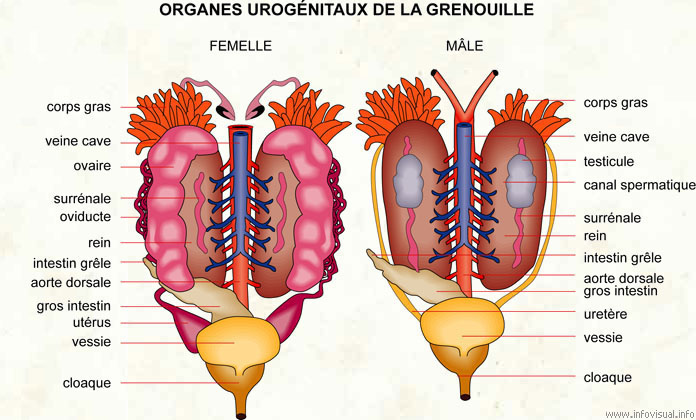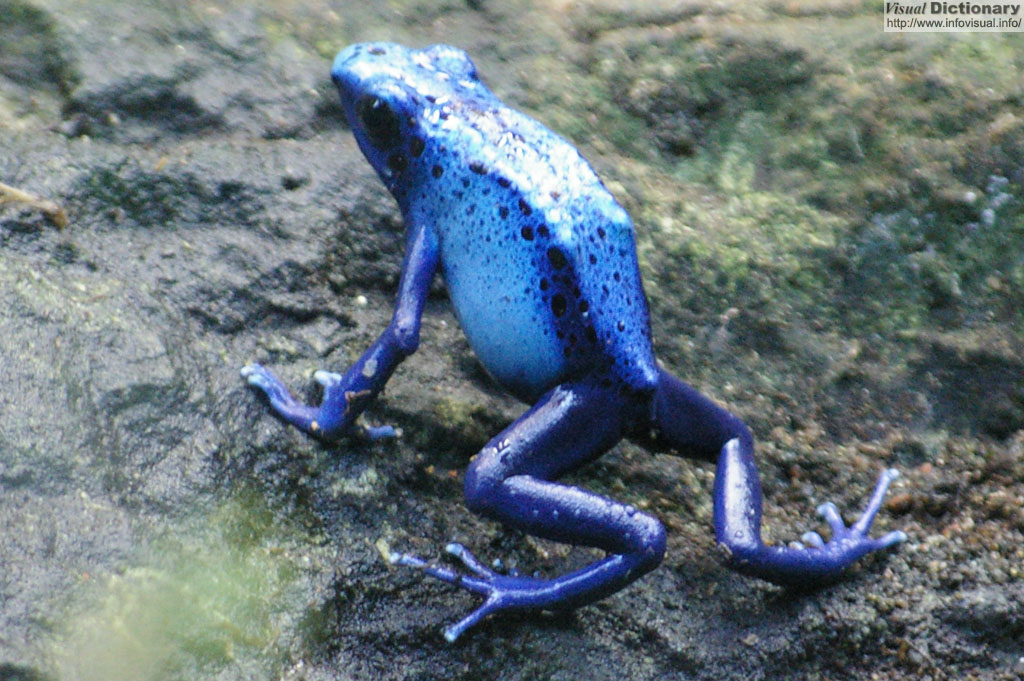Organes urogénitaux de la grenouille

Corps gras: substance adipeuse.
Veine cave: vaisseau sanguin ramenant le sang au coeur.
Testicule: organe sexuel mâle qui fabrique des spermatozoïdes.
Canal spermatique: tube relatif au sperme.
Surrénale: calotte située sur le rein.
Rein: organe de purification sanguine.
Intestin grêle: partie du tube digestif située entre l'estomac et le gros intestin.
Aorte dorsale: vaisseau sanguin dorsal transportant le sang du coeur aux organes.
Gros intestin: partie du tube digestif située entre l'intestin grêle et le cloaque.
Uretère: tube transportant l'urine des reins à la vessie.
Vessie: poche dans laquelle s'accumule l'urine.
Cloaque: orifice commun des voies urinaire, génitale et intestinale de la grenouille.
Utérus: organe génital féminin destiné à contenir l'oeuf fécondé durant son développement.
Oviducte: conduit par lequel l'oeuf sort du corps de la grenouille.
Ovaire: glande reproductice fabriquant les ovules.
Photo :

Dying poison arrow frog is a type of poison dart frog found in South America, specifically in the Sipaliwini District in Suriname. Dendrobates azureus is widely known as the Blue Poison Dart Frog or by its Tirio Indian name, Okopipi. The frog has blue skin and black patches, which serve as a warning to would-be predators that the skin contains poisonous alkaloids. It grows between 3 and 4.5 cm in length and has a typical lifespan of 4-6 years in the wild.
Within its native range, Dendrobates azureus is found in dark moist areas, especially under rocks near streams. Unlike most frogs, it lays its eggs on land, usually under a rock in a mossy area. Although poison dart frogs are known for their skin toxin, used on the tips of arrows or darts of natives, in reality only the species of the Phyllobates genus are used in this manner, although all poison dart frogs have some level of toxicity. The paralytic neurotoxins are not produced by the frog itself, but taken from many of its insect prey in the wild and deposited in the skin. As a result, frogs raised in captivity (often for the pet market) lack defensive poison. When these frogs are tadpoles, they also lack defensive poison.